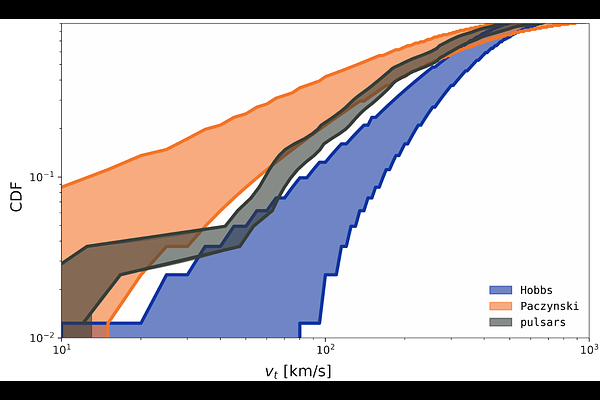Pulsar Rockets and Gaia Neutron Star Binaries

Pulsar Rockets and Gaia Neutron Star Binaries
Vishal Baibhav, Andrei Gruzinov, Yuri Levin
AbstractWe prove that the spin-aligned electromagnetic recoil force acting on a pulsar vanishes identically in Force-Free Electrodynamics. This contrasts with Hirai et al.'s recent argument that the rocket effect was important for explaining the eccentricity distribution of wide neutron star binaries found by Gaia. Our detailed analysis confirms that for a broad range of initial conditions and natal kick distributions, the rocket velocities of $v_r \gtrsim 30\, \mathrm{km/s}$ are required to account for the observed eccentricities. However, we find that in scenarios where the common envelope phase does not significantly shrink the initial orbit, and the natal kicks are drawn from Paczynski-type distribution, these eccentricities may arise without the influence of an EM rocket. If the natal kicks are perpendicular to the initial orbits, then explaining the Gaia neutron star eccentricities without invoking rockets additionally requires that the pre-supernova binaries avoid significant circularization, and that the mass loss during the supernova is minimal. The rocket effect can only be substantial in "weak" pulsars, where pair production near the light cylinder is suppressed and ${\bf E}\cdot{\bf B} \neq 0$ in the outer magnetosphere. We derive a rough estimate for a rocket force in a weak pulsar and relate it to the pulsar's radiative efficiency; simulations are needed to obtain numerically reliable expressions. If future observations prove that rockets are required to explain the data, this would imply that Gaia neutron stars are $\gtrsim $ Myr old, were previously rapidly spinning and are weakly magnetized, with a dipole field $\lesssim 10^{10}$ G and a relatively strong quadrupole component.